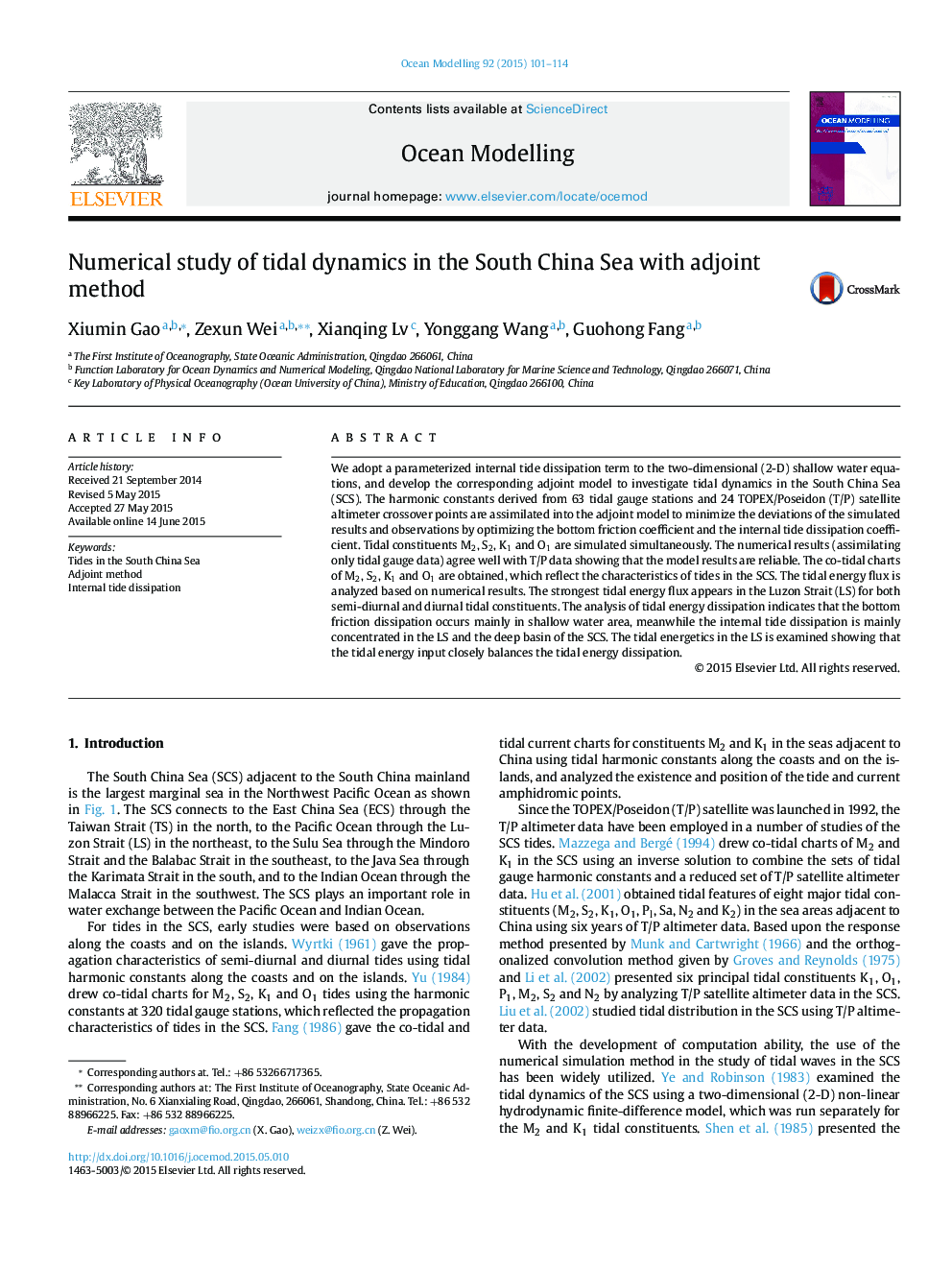| Article ID | Journal | Published Year | Pages | File Type |
|---|---|---|---|---|
| 6388102 | Ocean Modelling | 2015 | 14 Pages |
â¢We adopt a parameterized internal tide dissipation term to the two-dimensional tidal equations.â¢We develop the tidal and adjoint models for analyzing tidal dynamics in the South China Sea.â¢The adjoint method will minimize the differences between simulated results and observations.â¢The bottom friction dissipation occurs mainly in shallow water area.â¢The internal tide dissipation is mainly concentrated in the deep water area.
We adopt a parameterized internal tide dissipation term to the two-dimensional (2-D) shallow water equations, and develop the corresponding adjoint model to investigate tidal dynamics in the South China Sea (SCS). The harmonic constants derived from 63 tidal gauge stations and 24 TOPEX/Poseidon (T/P) satellite altimeter crossover points are assimilated into the adjoint model to minimize the deviations of the simulated results and observations by optimizing the bottom friction coefficient and the internal tide dissipation coefficient. Tidal constituents M2, S2, K1 and O1 are simulated simultaneously. The numerical results (assimilating only tidal gauge data) agree well with T/P data showing that the model results are reliable. The co-tidal charts of M2, S2, K1 and O1 are obtained, which reflect the characteristics of tides in the SCS. The tidal energy flux is analyzed based on numerical results. The strongest tidal energy flux appears in the Luzon Strait (LS) for both semi-diurnal and diurnal tidal constituents. The analysis of tidal energy dissipation indicates that the bottom friction dissipation occurs mainly in shallow water area, meanwhile the internal tide dissipation is mainly concentrated in the LS and the deep basin of the SCS. The tidal energetics in the LS is examined showing that the tidal energy input closely balances the tidal energy dissipation.
